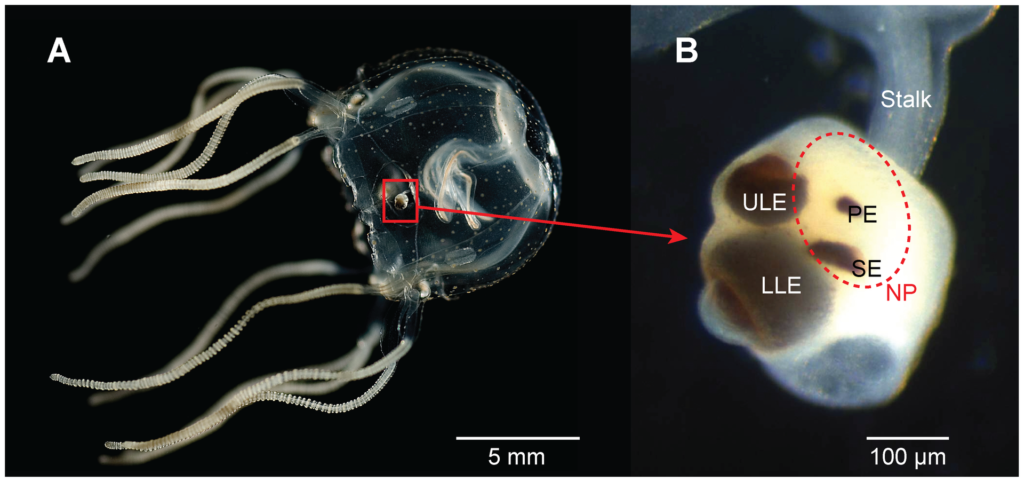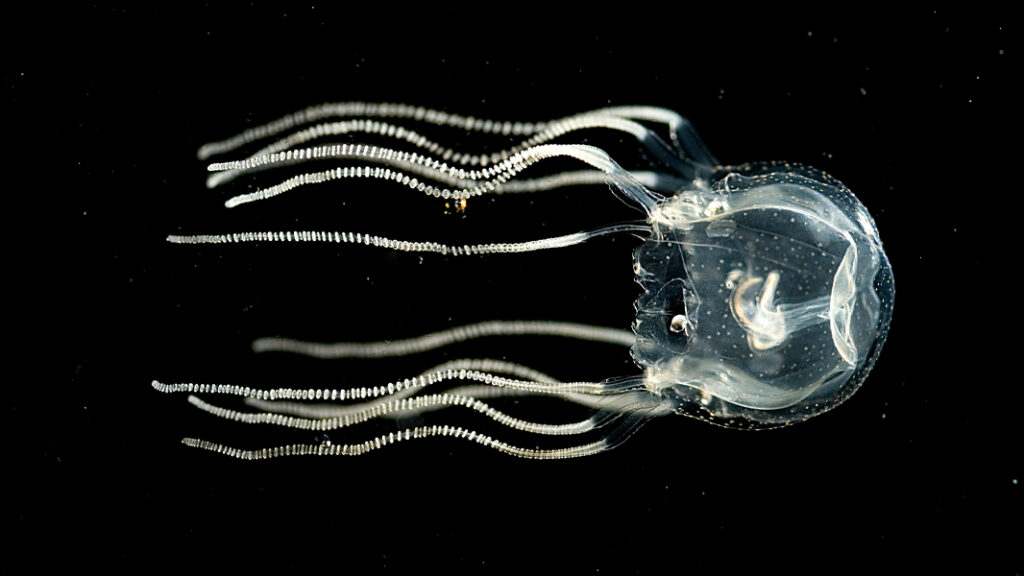Can Jellyfish Learn Tricks Without a Brain?
In a quirky experiment, scientists attempted to teach boxed jellyfish (Tripedalia cystophora) some basic tricks to investigate whether learning requires a brain. While you won’t be catching a ‘The Amazing Ball-Juggling Cnidarians and Friends’ show at Seaworld anytime soon, the results suggest that creatures with just a few neurons and sensory abilities can adapt their behavior through experience.
Learning: A Nervous System’s Triumph
Jan Bielecki, a neurobiologist from Kiel University in Germany, emphasizes that learning is the ultimate achievement for nervous systems. But what kind of nervous system are we talking about? Octopuses, for example, excel without centralized brains, relying on a vast network of roughly half a billion neurons spread throughout their limbs. Even the modest sea slug Aplysia californica has displayed learning abilities with just 20,000 nerve cells.
Jellyfish Intelligence: Surprisingly Noteworthy

T. Cystophora jellyfish, while not geniuses, have a more complex nervous system than expected. Each of their four vision structures, called rhopalia, contains around a thousand photoreceptors, which serve as both sensory tools and integration centers for translating stimuli into responses. This adaptation helps these jellyfish navigate mangrove roots in search of prey.
The Experiment: Teaching Jellyfish to Avoid Obstacles
To test if these simple creatures can learn, researchers placed adult T. cystophora jellyfish in a tank with gray-striped walls resembling distant mangrove bars. Initially, the jellyfish bumped into the wall without hesitation. However, within just 7.5 minutes, they adapted, pivoting four times more often and increasing their distance from the wall by half.
Remarkable Learning Speed
Anders Garm, a marine biologist from the University of Copenhagen, found the speed of learning surprising, similar to more advanced animals. It suggests that even the simplest nervous systems can achieve sophisticated learning, possibly a fundamental cellular mechanism dating back to the dawn of nervous system evolution.
Connecting Learning to Stimuli
To confirm that learning involved visual and mechanical stimuli, researchers isolated individual jellyfish rhopalia and showed them a movie of low-contrast gray stripes in motion. Initially, the organs did nothing. However, when a weak electric jolt accompanied the movie, the rhopalia perceived the fake mangrove roots as closer and responded by trying to avoid them.
Unveiling the Cellular Mechanisms
With this discovery that minimal neurons and basic stimuli can facilitate learning in animals, researchers are eager to delve into the interactions of nerves on a cellular level. Perhaps they’ll even attempt some jellyfish juggling in the future.
This research was published in Current Biology.
Also Read: What Is Pollination In Simple Words ?






